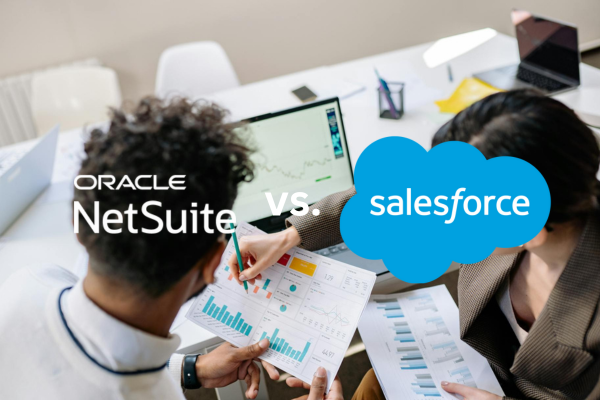Siloization: When a company stores its data in multiple places that aren’t accessible to all employees. As a result, workers across departments often struggle to stay on the same page, collaboration becomes difficult, and productivity suffers.
Data siloization has been negatively impacting businesses' profit margins across all industries— and if you’re here, you’re probably searching for a way to eliminate it. Fortunately, companies can break down silos in a time-effective manner through data loading.
Data loading/Data migration: When an organization transfers its data from disparate sources into a single, centralized platform such as Salesforce.
Centralizing data dissolves preexisting silos, allowing people in different departments to access accurate information on demand. This makes data loading necessary for organizations looking to facilitate collaboration and streamline operations; however, figuring out how to start the migration process can be challenging.
This blog will address the questions you need answered to confidently invest in a data-loading tool, helping you narrow down which one is right for you.
Consultant Insights: Questions We Ask Our Customers
Gerent regularly spearheads transformations for customers across industries, and our consultants have a wealth of experience in facilitating data-loading projects. To get an on-the-ground perspective on data loading, we connected with one of Gerent’s resident Solutions Architects, Faith Hewson.

Below, we’ve listed a few of the queries our solution architects pose to businesses as they embark on the data-loading process.
Where Is Data Stored? How Many Records Will We Need To Migrate?
The average organization has over 400+ data sources, though not all of them will necessarily be integrated. Organizations often work with our consultants to identify which sources are migrated, what objects will be created in the new system, and which sources will be discarded.
Some of the common sources our consultants deal with include:
- Data Warehouses
- Outlook
- Sales Representatives’ desktops
- Note pads
- ERPs
- Existing CRM

Some tools work well with a lower volume of data, while others are ideal for migrating millions of records simultaneously. After identifying which sources need to be migrated — as well as the quantity of records consultants will be working with — consultants can evaluate which data loading tool will work best for a particular job.
What Is The Quality Of The Data?
How much work will go into getting the data ready for loading? To assess data quality and accuracy, our consultants ask:
- How standardized is the data?
- Do you have duplicates?
- How much augmentation or clean-up is needed?
This information gives consultants an idea of how much work will need to go into processing the client’s rough data before loading begins. Uploading inaccurate data will only create more inefficiencies, undercutting change before it begins; therefore, it’s crucial that the consultants (and you) have faith in the data they’re working with before migrating anything.
How Many Different Objects Do We Need?
Objects: A Salesforce term, an object is a table or field that collects a specific category of data (e.g., Accounts, Contacts, Leads, Opportunities, and more!).
Our consultants then ascertain how many objects they’ll need to create in the client’s new storage system. Because the purpose of data loading is to make it easier for employees to access and understand data within a single source of truth, organizing that data by subject in a clear and orderly manner is paramount. Some of the most common objects our consultants create are:
- Accounts | A category encompassing the business’ account information, including assets, liabilities, and owner’s equity.
- Contacts | A category that displays all contacts, including clients, vendors, and employees.
- Orders | An object that collects all information about outstanding orders.
- Invoices | A group used to store all invoices.
Some tools are intended to transfer premade, standardized categories quickly, whereas others are designed to support the creation of custom objects. You need to pick the right tool for your migration to ensure your new framework is set up correctly; otherwise, you’ll inadvertently create more work for yourself.
How Far Back Into Your Historical Data Will We Need To Go To Migrate The Correct Data?
Historical data: Data collected about past events or circumstances, usually grouped by subject.
Much like the data volume issue, some tools are better at retrieving large amounts of historical data than others. As such, consultants will automatically remove those tools from consideration for jobs with larger historical data pools.
Import Data to Salesforce CRM With These Tools
Our solution architects generally use one of two tools: the Data Import Wizard or the Data Loader.
Salesforce Data Import Wizard
Benefits
The Data Import Wizard is best for jobs with 50,000 records or less and is most useful for importing common standard objects such as contacts, accounts, leads — and, if necessary, a few custom objects.
As a result, this tool is ideal for smaller jobs or jobs requiring quite a bit of manual cleaning. The Data Import Wizard also benefits from being incorporated into Salesforce’s setup menu, making it one of the easiest options to access.
Drawbacks
This tool is limited in capacity, does not automate the loading process, and may not be compatible with all record types.
While Data Import Wizard can load a few custom objects, it is most suited for migrating standard objects; businesses with records that do not fit the Wizard’s mold may find it ill-suited for their needs.
Salesforce Data Loader
Benefits
The Data Loader can load up to 5 million records simultaneously and facilitates both automated and manual processes, making it ideal for larger jobs. The Data Loader also allows you to load objects that the Data Import Wizard doesn’t support, as well as schedule regular data loads.
Accessible through the user interface, Data Loader is also built into the Salesforce system. Clients looking to import large amounts of data into Salesforce will find this the most accessible tool.
Drawbacks
This tool is more suited for larger jobs. As a result, companies that do not need such a large capacity may find the Data Import Wizard more suitable for their needs.

Select the Data Migration Tool That’s Right for You
Neither the Data Loader or the Data Import Wizard is necessarily better than the other; the one our solution architects suggest will hinge on our client’s unique needs, situation, and goals. With the right tool, you can eradicate siloization and set your organization up for success with a scalable data framework.
If you’re looking to start your own personalized journey and experience the data-loading consultation process firsthand, give us a call!










